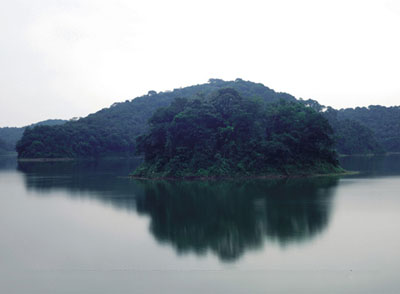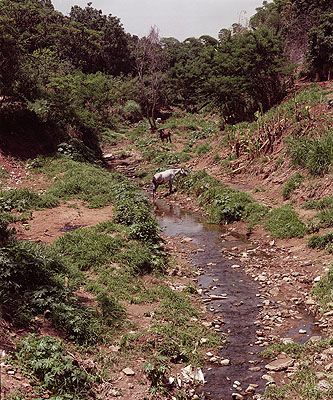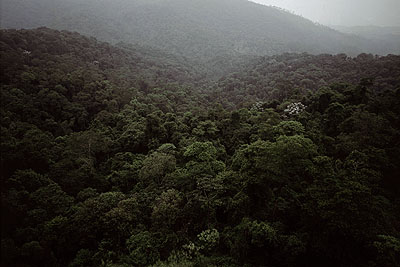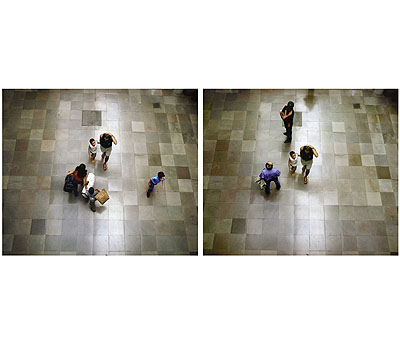
"Guarapiranga III", 2003
180 cm x 275 cm
Caio Reisewitz »
tantas coisas perdidas
Exhibition: 26 Jan – 10 Mar 2007
Galerie van der Mieden
Pourbusstraat 15
2000 Antwerp

Van der Mieden Gallery
Mechelseplein 10
2000 Antwerp
+32 (0)3-502 91 15
mail@vandermieden.com
www.vandermieden.com
Wed-Sat 13-18
Born in São Paulo Brazil, in 1967, Caio Reisewitz is a photographer who portrays the attendance of the sublime in nature, in its most classical denotation. In Reisewitz's grandiose photos, the indisputable protagonists are mighty thickets and plains, rivers and meadows, in which the human being seems to have hardly interfered. Nowadays, these nearly Utopian, pristine natural scenes are hard to spot in their attempt to defend themselves from human actions. His landscapes seem secret places, coming right out of the heart of the jungle. However, they were captured in the vicinity of his hometown, São Paulo, an impressive megalopolis that grows mercilessly, greedily devouring its surroundings. On the margins of this conurbation, nature has remained untouched, but not for long. In exhibitions of Reisewitz's photographs, a picture of a misty landscape captured at the break of dawn is featured next to an image of a garbage dump on fire. This is the photographer's immediate reality. Another theme is land reform, the photographic elegy of places that humans have devastated just like they have done since they learned agriculture and burnt greenery before cultivating, razing the land in the most primitive ways so they could establish cattle ranches. The burning of forest grounds is a preliminary system to prepare land for mass cultivation, whether it be transgenic soybean plantations in the Amazon, or sugarcane plantations destined for the production of fuel ethanol in different parts of the country. The main importers of both products – soybean and sugarcane – are the United States and China. Since 1999, exports to these countries have increased by nearly 600%. Reisewitz's depictions of these plantations emanate an overwhelming beauty despite the images of degradation resulting from human need. The expanse of Brazilian landscape, the invisible human presence that we perceive in the razed fields and the precarious huts of the landless squatters who occupy non-productive landed properties help us understand a life of hardship, and a struggle that is seemingly impossible to win, but that in the course of centuries has been questioned: the struggle of humans in face of nature. The violence against the earth not only threatens its existence but also generates transformations of a political and social order. The theme of land reform refers to the geophysical and historical use of the earth. The human individual has redesigned landscape with his investigation – something that is not always an impure, malignant, and disparaging thing, though more often than not it is. In nature, the conception of a landscape is the point of confluence of certain events of a given time of day, such as light and other elements that determine a magical instant. Reisewitz, trained in the German school, is referred to as someone who presents his work in nonpartisan manner so that it is up to the spectator's eye to discover and scrutinize what he/she sees. The result is an accurate technique and absolute temperance, a total monumentality. He patiently waits for the opportunity to capture this moment, a sensorial realm that contains elements that photography cannot convey – namely sounds, odors, atmosphere... – yet he hopes that viewers will hear and smell the sounds and odors he perceived in the given landscape, in that moment. Reisewitz portrays the world so he can become impregnated with it. from: 'Caio Reisewitz – Land Reform', by Virginia Torrente, Madrid 2006

"Goiania III",

"Mairipora",
